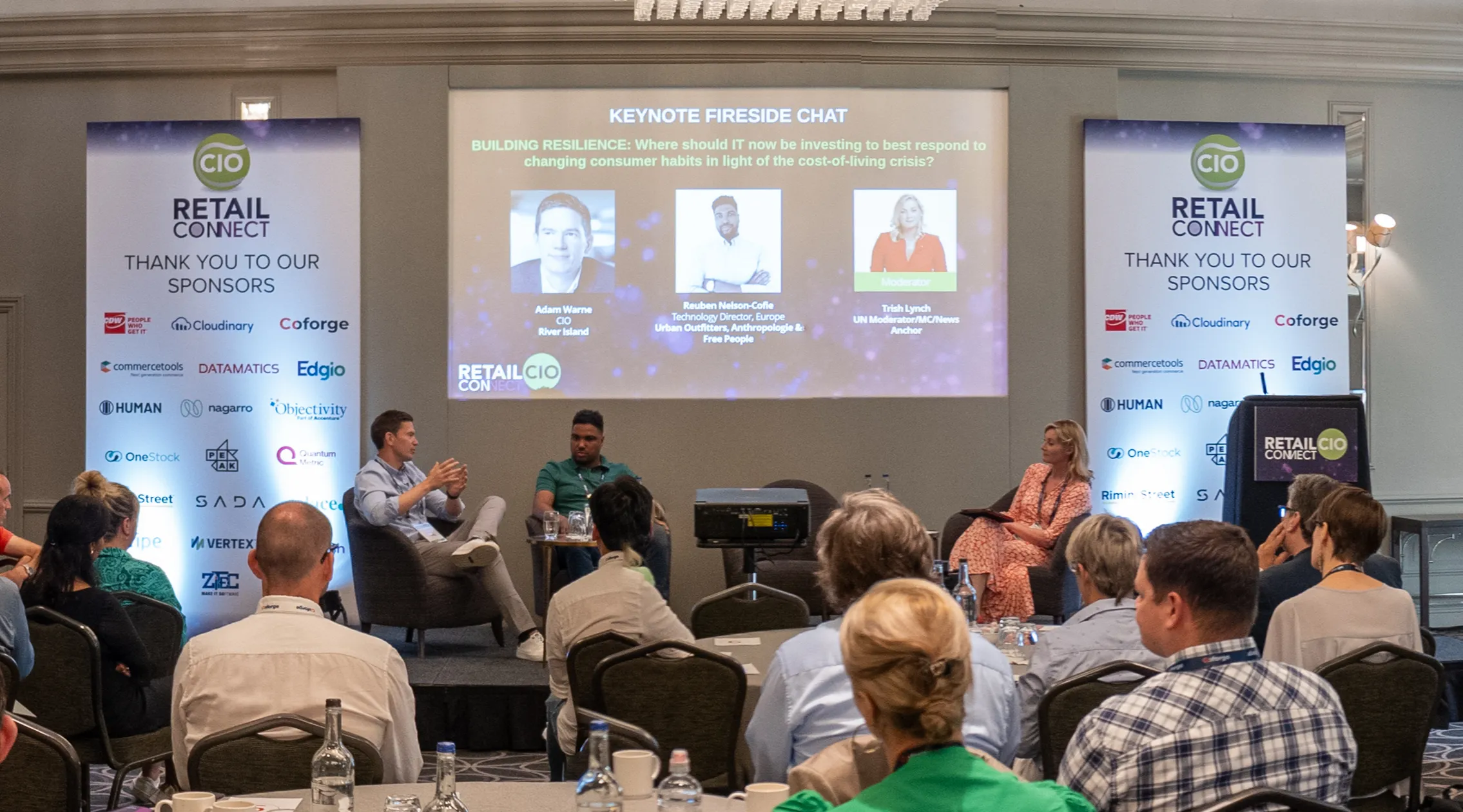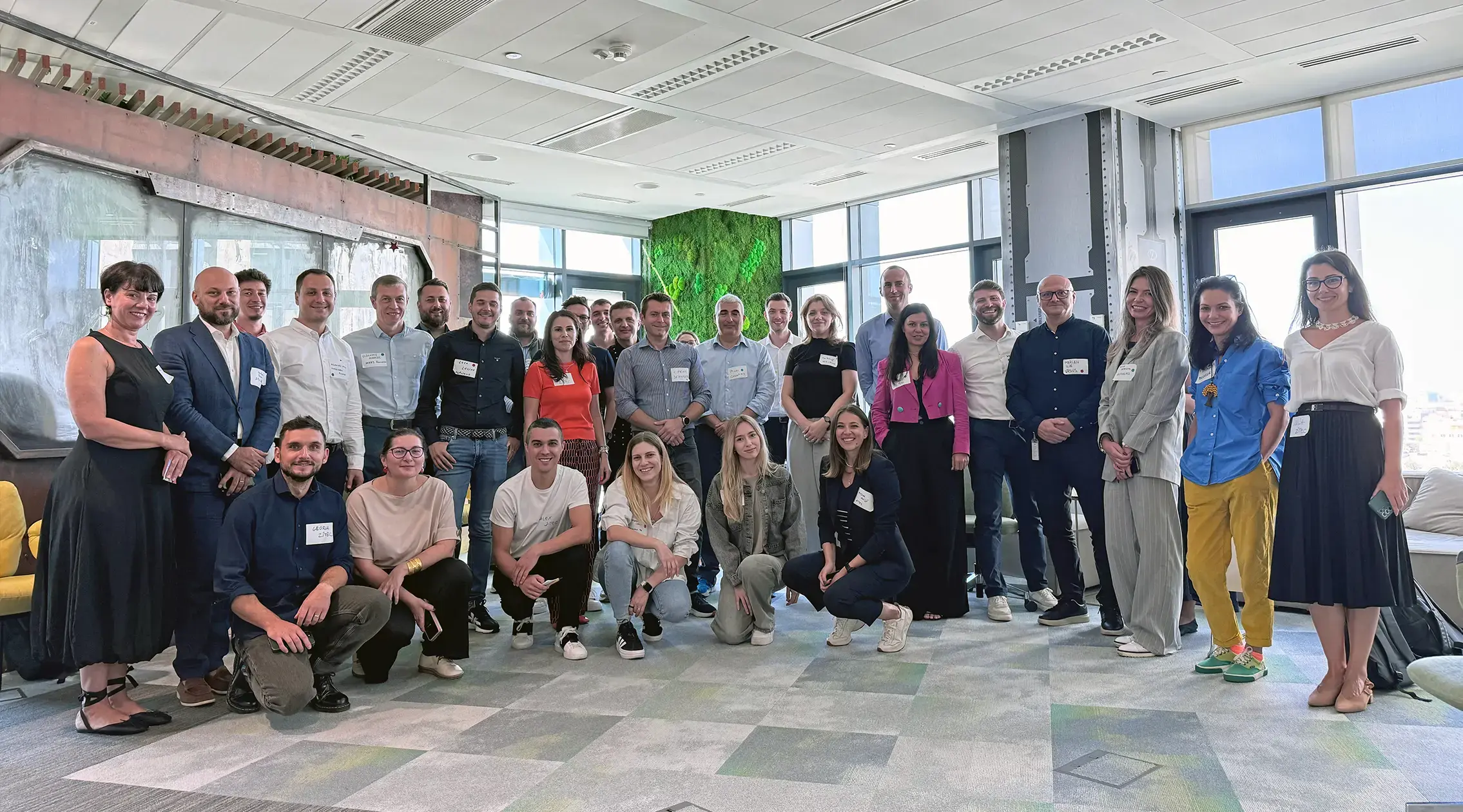In the ever-changing digital landscape, adapting to the speed of innovation feels akin to swapping car wheels while driving. Yet, for retailers, it's a must-do. The key lies in seamlessly integrating systems and modernizing legacy infrastructures, vital for staying competitive and meeting customers wherever they are.
But that's not all. With a dizzying array of new technologies to navigate, the process can feel downright draining. Retailers now require the right technology partner to put them in the pole position for this race. Without it, brands risk losing their way in a maze of options, impacting customer experiences and eroding revenues.
According to Raluca Moldovan, Business Growth Manager at Zitec, retail leaders must future-proof their businesses by balancing adaptability with financial outcomes.
Technology is racing ahead at breakneck speed. Amidst the sea of trends and technologies, choosing the ones that align with your business is the key challenge.
Raluca Moldovan
Business Growth Manager at Zitec
For this article, Zitec experts have zeroed in on seven key trends that will significantly impact the future of retail. Dive into each one below and consider how they can steer your business ahead of the competition. Let's rev up your retail game!
1. Move beyond traditional omnichannel strategies to delight customers with an innovative phygital approach
In the realm of digital business strategy, retailers widely acknowledge that customer experience serves as the ultimate driving force. Yet, they frequently encounter a significant obstacle - their extensive, at times antiquated eCommerce platforms - hindering them from delivering truly captivating omnichannel experiences.
Moreover, contemporary retail businesses must surpass conventional "omnichannel" tactics and wholeheartedly embrace a "meta-channel" or "phygital" strategy, ensuring seamless integration across all touchpoints. You can review this article to drill down into additional best practices for managing customer experience across channels, like mapping and analyzing touchpoints or preventing channel conflict.
Nowadays, shoppers explore a multitude of channels, ranging from traditional brick and mortar stores to online platforms and even social media outlets like Instagram. In this realm of endless possibilities, each channel plays a unique role, and none can entirely replace the others. To develop successful eCommerce strategies for the future, it is crucial to break free from the notion of separate and distinct channels. Instead, brands should view them as different facets of the customer's life, mirroring their perspective.
The retail spaces of the future will be a harmonious fusion of physical and digital realms, where consumers expect captivating experiences, driven by an innovative mix of technologies and strategies adapted to their needs. A recent EY survey showed that 36% of consumers plan to do more of their shopping online and only visit stores that provide great customer experience and interactions. Increasingly, consistency across physical and digital channels will play a critical role in customer engagement and loyalty.
Intuitive user experience (UX) and user interface (UI) design is essential ensuring a great customer experience, shaping the journey from initial interaction to final purchase. Without it, clients face frustration, higher abandonment rates, and reduced brand loyalty, while investing in a well-crafted design drives engagement, loyalty, and business growth.
I cannot stress this enough: customers don't see or care about channels. They want a seamless experience. And you cannot offer customers a seamless experience without an integrated system. That seems to be a constant challenge for many of the players in the industry, especially big companies that have invested heavily in their infrastructure and want to make the most of their previous investments.
Adrian Pop
Business Growth Consultant at Zitec
And then there’s the data aspect, which is not easy to get right. But by infusing their phygital strategy with AI and data analytics, brands can propel their eCommerce into the future and meet their customers’ expectations wherever they engage. However, it's important to note that these innovations must be built upon a solid foundation of interconnected systems that work seamlessly together.
This brings us to our next point.
2. Integrate and modernize complex systems and infrastructures
Integrating multiple systems and modernizing legacy infrastructures has become a must for retailers aiming to stay competitive.
Ensuring that disparate systems work harmoniously and enabling smooth and secure data flow is no small feat. In choosing your technology partner, make sure they have extensive experience and proven methodologies in helping retail organizations streamline their operations.
At Zitec, we have advised and supported multiple retail businesses in their modernization journey, and we will continue to do so. We provide:
- Multi-system integration: ERP, CRM, WHM, PIM and other 3rd party integrations
- Legacy system & infrastructure modernization
- Cyber and data security
- Ecommerce, Mcommerce, marketplace platform
- Unified commerce infrastructure
- Mobile/Web apps
- Immersive CX, UX/UI audit & redesign
- Multi-currency/global payment automation
-
Omnichannel & digital marketing
eCommerce has seen tremendous growth, especially in the last years, and the retail business is now highly competitive. Most shoppers move swiftly between physical and digital channels, and their expectations are higher than ever. In this tough market, it’s all about retaining and gaining loyalty from buyers, and this should be powered by the overall experience they have with your brand. That's why it's crucial to build integrated systems that support the seamless phygital experience customers demand.
Andra Ioniță
Business Growth Consultant at Zitec
Zitec helps companies:
- simplify digital transformation, guiding them towards informed business decisions and the buy-in needed at board level;
- get lean and focused, by driving operational efficiencies and cost savings;
- break down department and team silos and ignite collaboration through cross-functional alignment implement top-notch data security.
A comprehensive cybersecurity strategy will safeguard business operations, customers, and long-term success in the digital age. Retailers store a wealth of sensitive information, including personal details, payment credentials, and purchase histories.
Any breach of data could lead to severe consequences for the business and its customers. Embracing cybersecurity should not be a reactive measure, but a proactive investment in resilience and preparedness. A robust cybersecurity framework involves implementing multi-layered defense mechanisms, employing encryption protocols, conducting regular security audits, and providing employee training to recognize and mitigate potential risks. By implementing these measures, retailers can strengthen their security posture and stay one step ahead of cybercriminals.
Once you have safeguarded company and customer data, it’s time to put it to work and watch it drive the best outcomes.
3. Leverage data insights for targeted experiences
Personalization is shaping eCommerce, allowing businesses to deliver tailored shopping experiences that meet individual customer preferences and needs.
Nearly half of digital consumers expect better personalization in exchange for their personal information, according to Euromonitor’s latest Voice of the Consumer: Digital Survey quoted by Forbes.
Data is becoming a key driver in decision making. Using first-party data and proper data analytics, customer-centric brands are now able to figure out the best ways to incentivize and keep their clients close.
Research presented by Peak AI at a recent Retail CIO 2023 event (attended by our experts and where Zitec was a sponsor) shows personalization can drive an 8,400% return on ad spend, 10 times more than the industry average, and a 12% increase in website revenues.




Our team at the Retail CIO Connect 2023 event in the UK
By harnessing personalization and data insights, eCommerce platforms can offer targeted product recommendations, customized marketing campaigns, and personalized messaging, resulting in increased customer engagement, satisfaction, and conversion rates.
The integration of personalization and data insights can enable businesses to better understand behavior, optimize pricing strategies, and enhance overall operational efficiency.
Use consumer data to ensure the convenience users will expect. Like in your mobile experience.
4. Embrace the importance of mobile apps
Mobile apps are crucial to eCommerce. According to a study by Statista, global mobile app revenue in the eCommerce sector is estimated at $3.56 trillion in 2023, showcasing the significant impact of mobile apps on the industry.
Consumer behavior indicates a growing preference for mobile apps in eCommerce. According to a survey by Adobe, 79% of smartphone users have made a purchase using a mobile app in the last six months, highlighting the increasing reliance on mobile apps for shopping.
With over 12 years of expertise, Zitec’s mobile development team has a vast mobile development portfolio, which includes projects such as Tazz, Sameday app for couriers, Freshful by eMAG, the Credit Europe Bank app, PayPoint, eMAG Marketplace, Aurus, and many others.
For example, for our customer Freshful, we developed the native mobile app for both the Android and iOS platforms, covering the entire life cycle, from ideation to delivery, including business analysis, UX/UI design, app store publishing, and then continuous support and optimization.
In developing a mobile app, let’s pause for a moment and look at the 3 C's that might determine its success: cost-efficiency, customer loyalty, and competitive advantage.
Leveraging mobile solutions can transform business processes and enhance customer experience. Just to mention a few benefits:
- Cater to the ever-growing number of mobile-centric consumers and strengthen engagement and loyalty;
- Leverage push notifications, targeted messages and exclusive promotions to increase awareness and engagement;
- Streamline business processes and workflow and improve cost efficiency and employee productivity through the use of internal mobile apps.
Dive deeper into key trends in mobile app development and consider how some of these upgrades might support business growth.
From project ideation and UX/UI design, to development, maintenance, and support, we build mobile solutions that can help retail businesses thrive. No matter how complicated or ambitious the project is, we are prepared to take it on. Use the button below to find out more and get in touch.
And while it's crucial to concentrate on the here and now, companies should not overlook the essential elements of their enduring strategic plan.
5. Weave sustainability into your long-term strategy
As concerns surrounding the environmental impact of fast fashion and the carbon footprints associated with technologies grow, consumers are becoming increasingly mindful of sustainability.
A new Harris Poll research commissioned by Google Cloud reveals that 82% of shoppers want a consumer brand’s values to align with their own, and they’ll vote with their wallet if they don't feel a match. In fact, 75% of shoppers have switched away from a brand due to a misalignment in values.
Shoppers now prioritize sustainability and show a keen interest in brands that champion environmental advocacy initiatives.
Despite these shifting consumer preferences, retailers face an uphill battle in earning consumer trust on sustainability issues. According to this GFK Consumer Life Global report, only one in ten brands are considered eco-friendly, with younger generations in particular skeptical of green claims. Even when sustainable practices have a meaningful impact, effectively communicating these efforts to consumers in a clear and accessible manner can be a daunting task both online and offline.
So, what actions can brands take? They should evaluate how they can adopt sustainable business practices, make their products or services more environmentally friendly, and discover straightforward yet impactful ways to convey this information to consumers.
Choose partners that share the same values and have a track record of working with brands -like Beko - that are committed to sustainability.
Zitec customer, Flip, encourages sustainability by ensuring people can monetize the smartphones they no longer use. Leveraging Zitec’s development services, the flip.ro platform has been able to sustain the accelerated growth and become the leading market player in the Romanian refurbished electronics market, with a favorable outlook to replicating that success in the entire Central and Eastern European region.
Through digital transformation, companies can save resources and protect the environment, as another one of our customers selling building materials did, by switching from paper to digital format for different tasks and processes.
In thinking of a greener future, don’t discount the potential this next technology has in optimizing resource utilization, reducing waste, and enabling smarter decision-making.
6. Empower Your Business with AI-infused eCommerce
Artificial Intelligence (AI) is a groundbreaking innovation driving transformative change across various industries, and its impact on the retail sector is already undeniable. Brands are increasingly harnessing the power of AI to create memorable customer experiences, streamline processes, and boost sales. Take Nike, for instance, which utilizes AI technology to personalize workout plans based on users' fitness level, age, and data from shoe sensors, optimizing performance and reducing the risk of injuries.
Smart product recommendations, customized search results, and shopping assistants are just a few examples of how brands cater to their customers' specific needs and desires. AI-powered chatbots and virtual try-ons are also employed by many retailers to delight their customers. Supporting these endeavors are tools like Google's Recommendations AI, which assist businesses in achieving their objectives.
As an Adobe Solutions Bronze Partner, Zitec can also advise your company on using Adobe Sensei - Adobe’s integrated AI and machine learning technology - to automatically analyze shopper behavior and generate product recommendations that will deliver personalized experiences to your customers.
The benefits of AI extend beyond customer interactions. Retailers can leverage AI for efficient inventory management, accurately predicting product demand and preventing stockouts. Additionally, AI elevates data collection capabilities, empowering retailers to utilize analytics tools for insights into customer habits.
And if AI can help companies gather customer data and customize their journey, these next technologies can take their experience closer to a real-life feel.
7. Transform your eCommerce with immersive AR/VR experiences
Based on recent research conducted by McKinsey & Company, approximately 50% of surveyed consumers have expressed interest in utilizing "metaverse" technology, including augmented reality (AR) and virtual reality (VR), for shopping purposes within the next few years.
It’s not surprising. Apps that integrate AR or VR technologies deliver immersive experiences and generate more users, thus growing business sales and revenues.
AR merges physical elements with digital ones, enhancing the shopping experience by enabling customers to preview products within a real-world context. AR aids their decision-making process prior to making a purchase. Clothing retailers, in particular, have embraced augmented reality, as it allows shoppers to "try on" garments, shoes, jewelry, and accessories virtually before making a buying decision.
VR is also popular in the realm of eCommerce. While similar to AR, VR differs in that it immerses users in entirely digital environments, without any connection to the real world. Utilize VR technology to create virtual showrooms, allowing customers to "browse" through a store as if they were physically present at a brick-and-mortar location.
Many global brands are already using AR and VR technologies successfully to enhance the shopping experience and engage customers in innovative ways.
For example, H&M launched an AR app that enables customers to "try on" various outfits virtually. Users can select different clothing items from the H&M collection and see how those would look on themselves using AR technology.
The outdoor apparel brand North Face has integrated VR into some of its retail stores to provide customers with a unique shopping experience. Through VR, customers can virtually explore different outdoor environments and test North Face products in simulated outdoor conditions, enhancing their understanding of the products and fostering a deeper connection with the brand.
Takeaways: moving forward with a ‘less is more’ mindset
This article was inspired by the fruitful conversations Zitec experts have had at the recent Retail CIO Connect 2023 event in the UK with some of the most prominent leaders in the industry. We’re grateful to all who took the time to share their remarkable journeys with us.
While all these innovative technologies offer tremendous potential, it can be overwhelming to navigate them all. In the midst of this, the mantra "less is more" holds true. You have to be able to distill through the multitude of available solutions and align them with specific goals and needs. Additionally, integrating new technologies with existing systems presents its own set of complexities.
On top of it all, the industry is currently facing the headwinds of inflation and dropping consumption. People spend less, so they will consider their choices more carefully before making a purchase.
In this ever-changing setup, finding the right partner to help maximize opportunities and mitigate threats is paramount.









.webp)